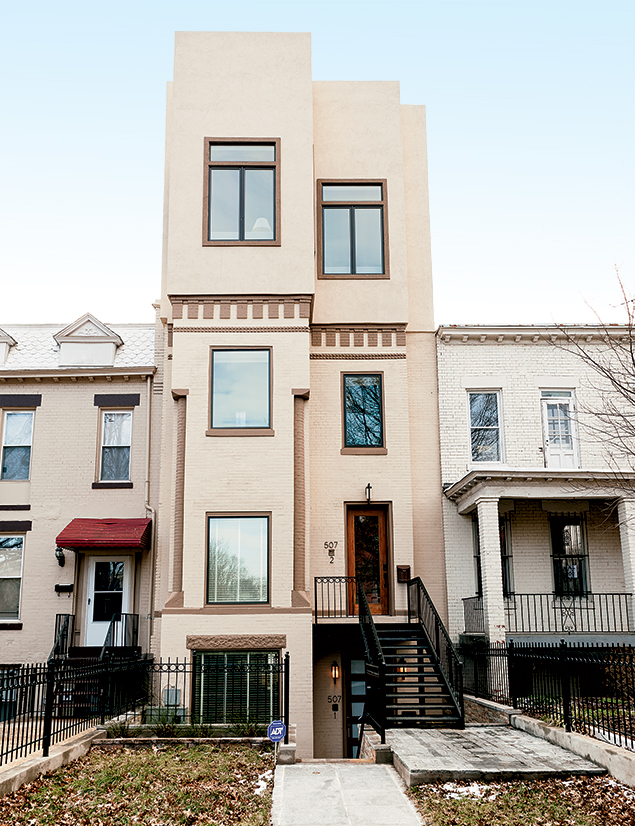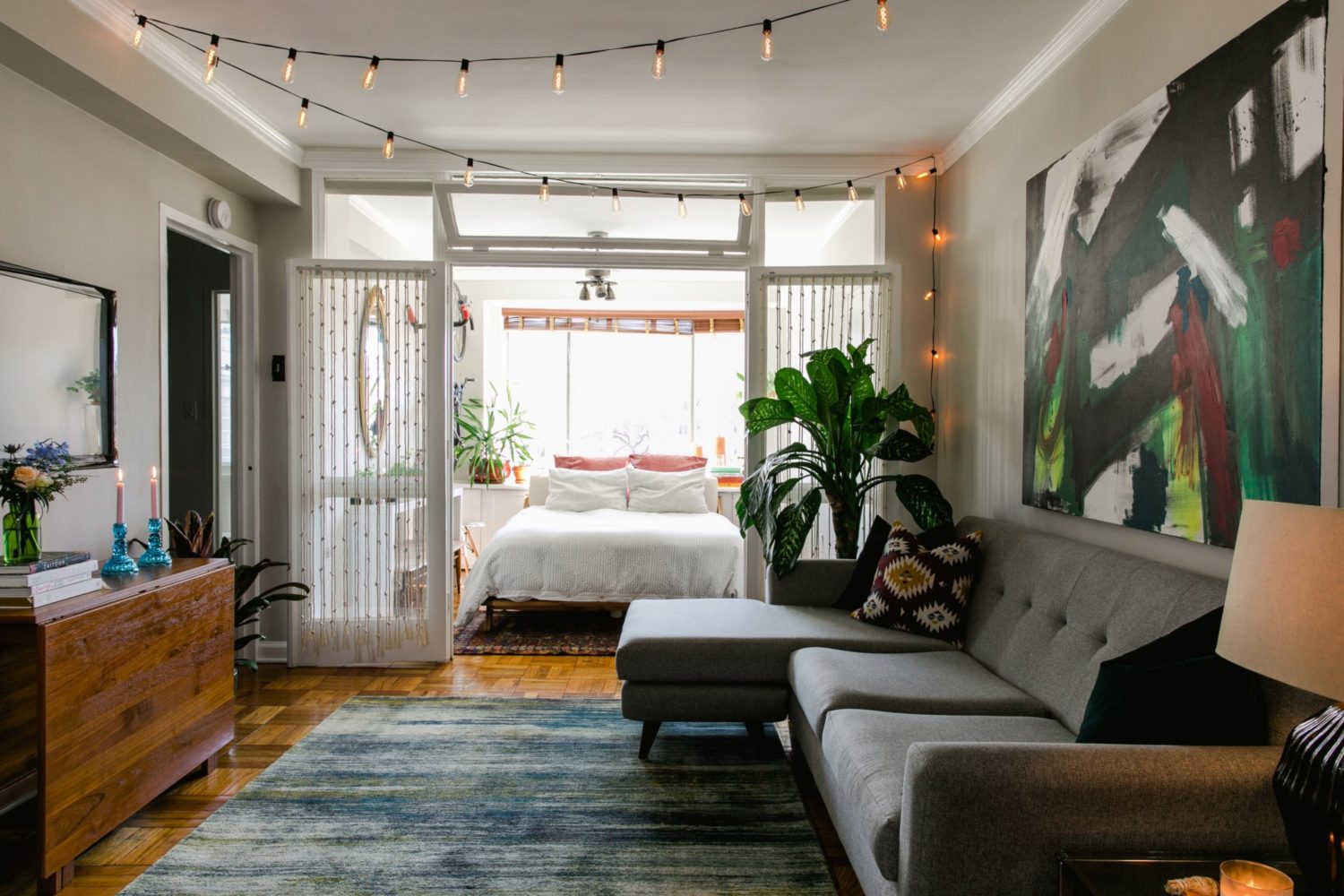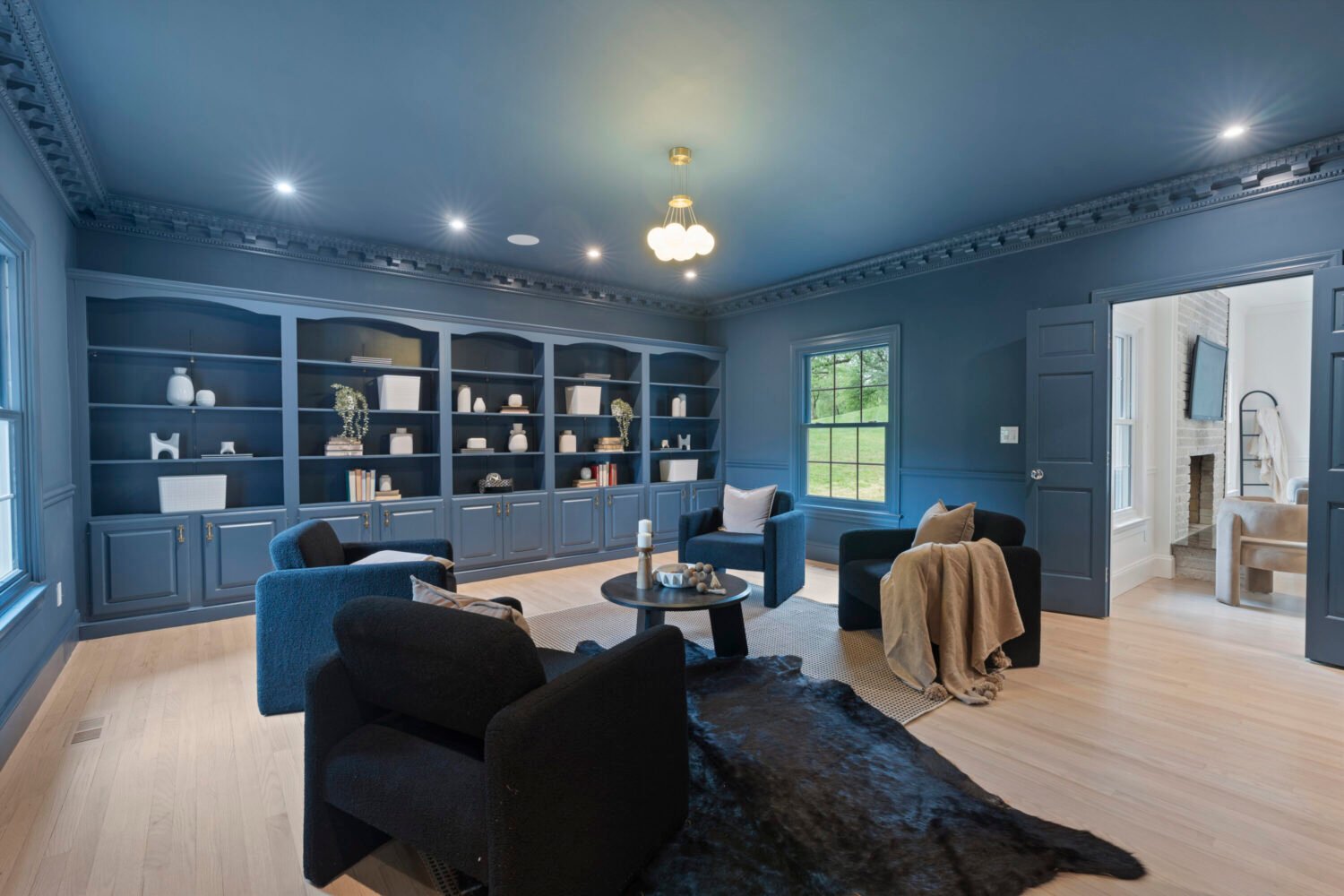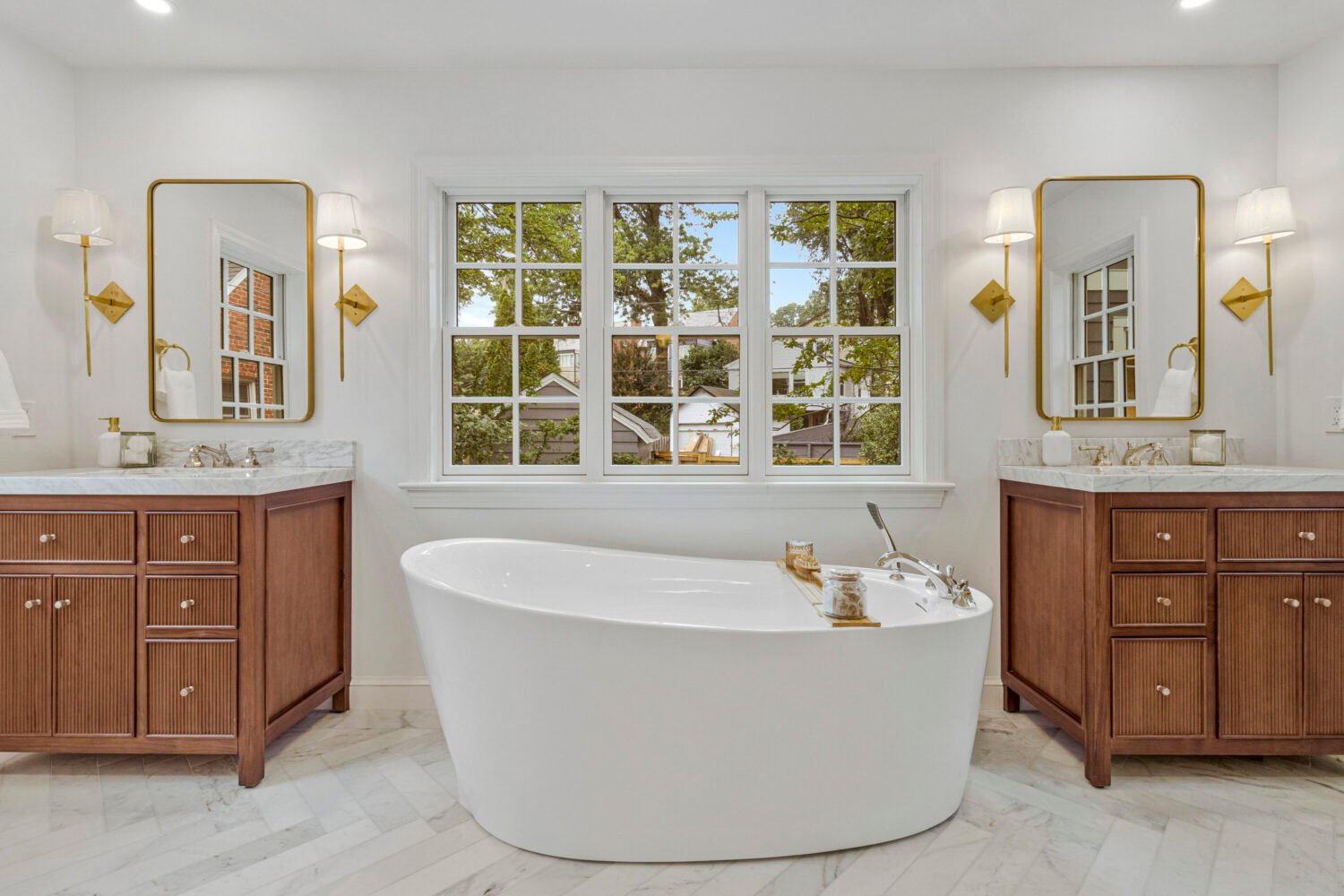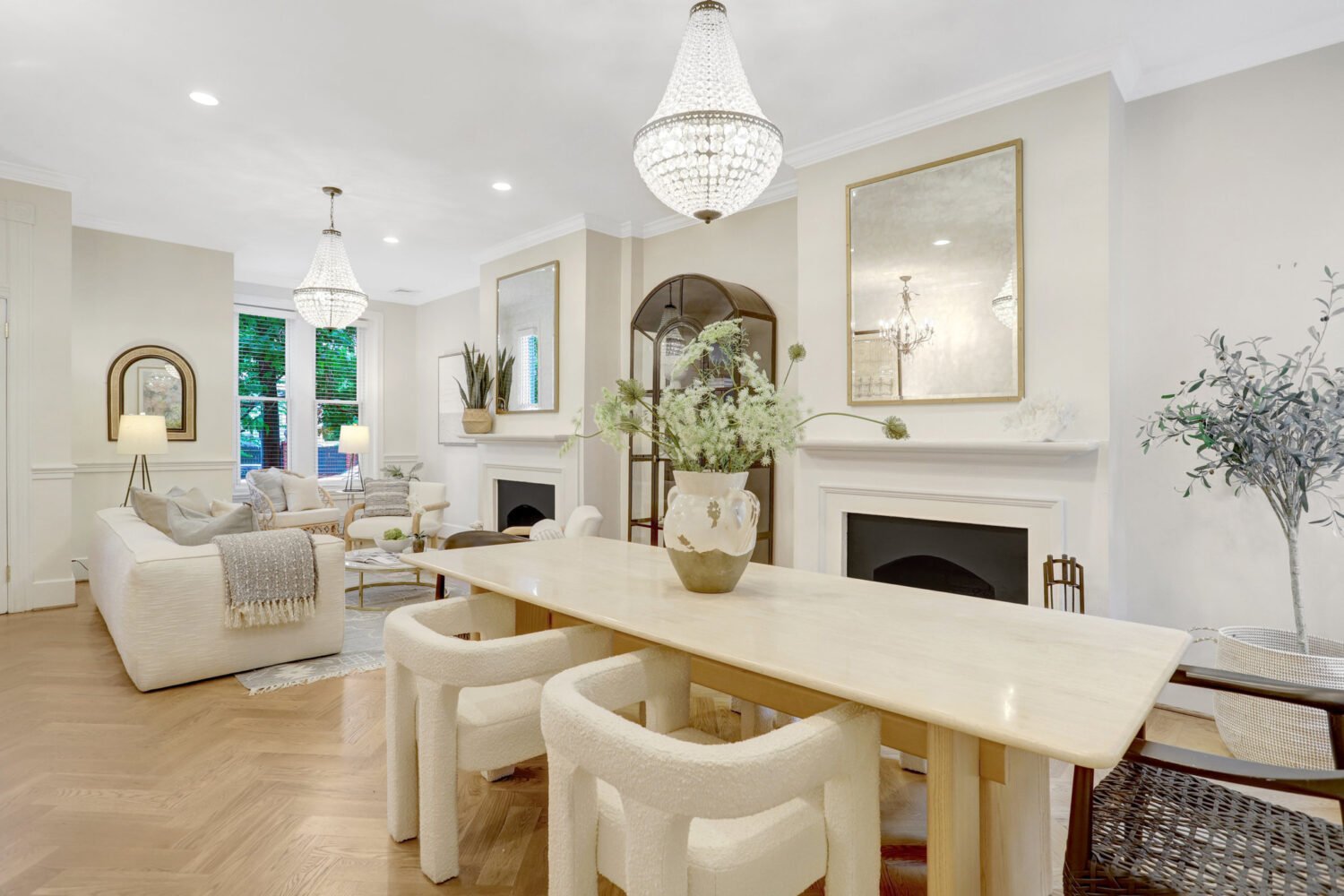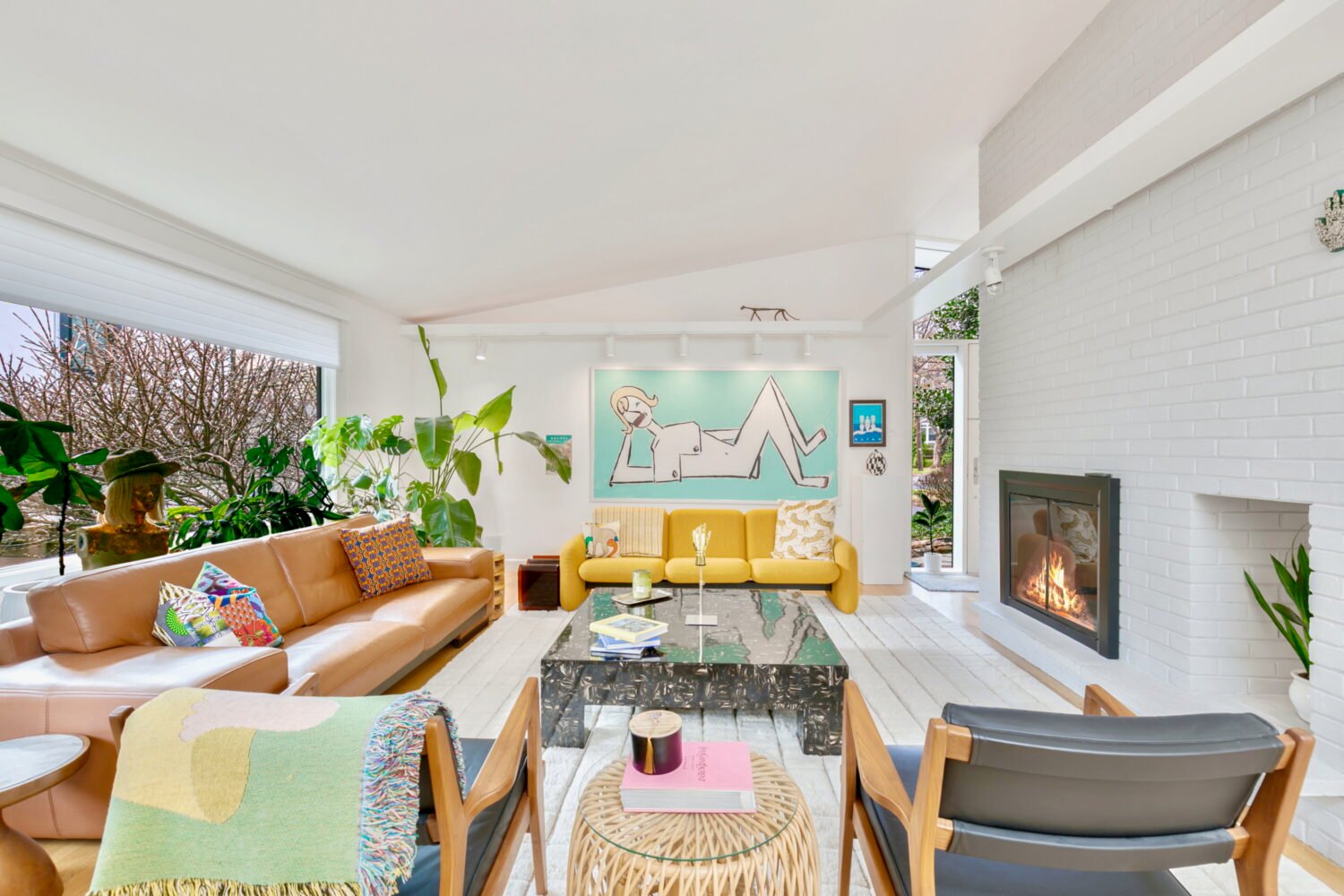The DC Zoning Commission is reviewing a contentious proposal from the Office of Planning to drop the maximum height of pop-ups—rowhouses expanded upward, usually to become condos—from 40 to 35 feet in residential neighborhoods zoned R-4, such as Shaw and Columbia Heights. (The city could grant exceptions to the rule in some cases.) The plan would also prevent single-family homes in the zone from turning into condos or apartments, by allowing such conversions only by permit in non-residential buildings.
Here, both sides of the argument, distilled.
Stop It!
Critics say pop-ups hurt the appearance of neighborhoods, plus many have damaged adjoining rowhouses. Tracy Hart, a resident of DC’s 16th Street Heights and a leader of the grassroots group Stop the Pop, says some of her neighbors’ chimneys can no longer ventilate properly, while others’ rooftop solar panels have been obstructed. She believes that increasing housing density in neighborhoods like hers—made up primarily of single-family homes and, in her estimation, far from downtown DC and Metro—is inappropriate and destructive to the area’s character.
Others take a more measured view, such as the American Institute of Architects’ Washington chapter, which supports reducing the height of pop-ups but disagrees with limiting condo and apartment conversions to non-residential buildings.
Pop It!
Washington is growing. The Urban Institute predicts that DC’s population of 658,893 will boom to 718,499 by 2030. Real estate here is already among the nation’s most expensive, and prices will continue to skyrocket if the housing supply can’t keep up. We must increase density, and popping up and out is one way to accomplish that.
This is the crux of the argument in favor of pop-ups. Harriet Tregoning, former director of DC’s Office of Planning, believes so strongly in it that she has publicly opposed the office she headed until last year. In a letter to the District’s zoning commission, she points out that the city predicts that more than 75 percent of DC households won’t have school-age children by 2030, meaning our current housing stock is too weighted with single-family homes.
The Verdict:
Pop it! It’s unfortunate when a developer turns a rowhouse into something akin to a middle finger towering over the block. But walk around DC and you’ll see plenty of buildings that have popped up in an inoffensive way, while adding to a housing pipeline that’s lacking. As for pop-ups that damage nearby buildings—that’s a problem, but not one the proposal resolves. The Department of Consumer and Regulatory Affairs, the agency that issues building permits, ought to be more mindful of how renovations will affect adjoining homes.
Tregoning suggests piloting a panel of architects to advise builders on how to create tasteful additions. The idea of developers lining up for more review may sound idealistic, but consider that two of three units at 1013 V Street, Northwest—the notorious “monster” pop-up in the U Street corridor—have, as of press time, languished on the market for ten months. Surely, the lag is a reflection on the building’s obnoxious appearance—there’s an economic incentive to develop aesthetically pleasing buildings.
Senior editor Marisa M. Kashino can be reached at mkashino@washingtonian.com.
This article appears in our March 2015 issue of Washingtonian.

